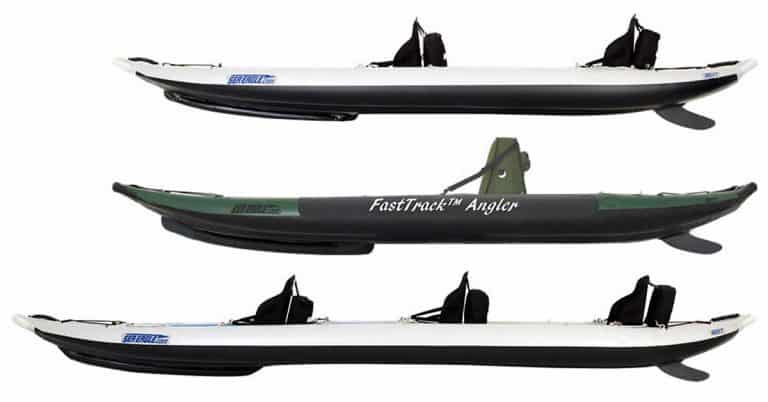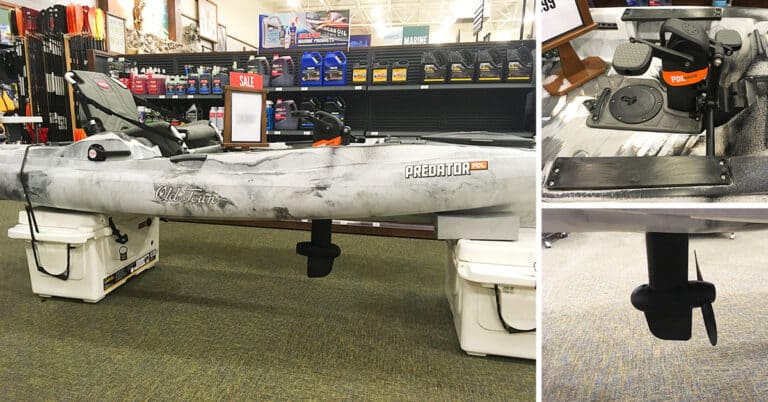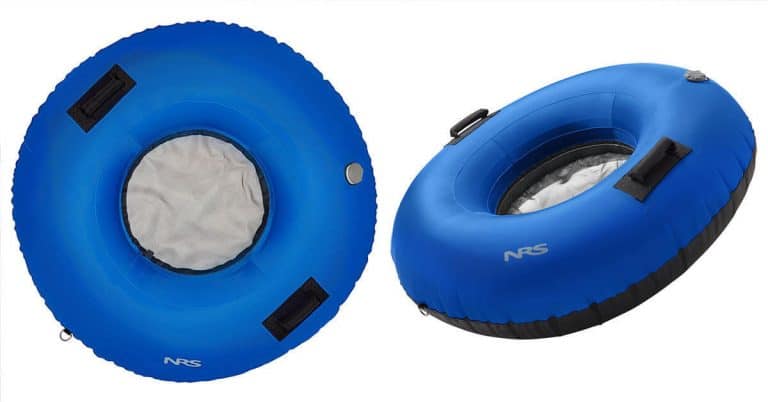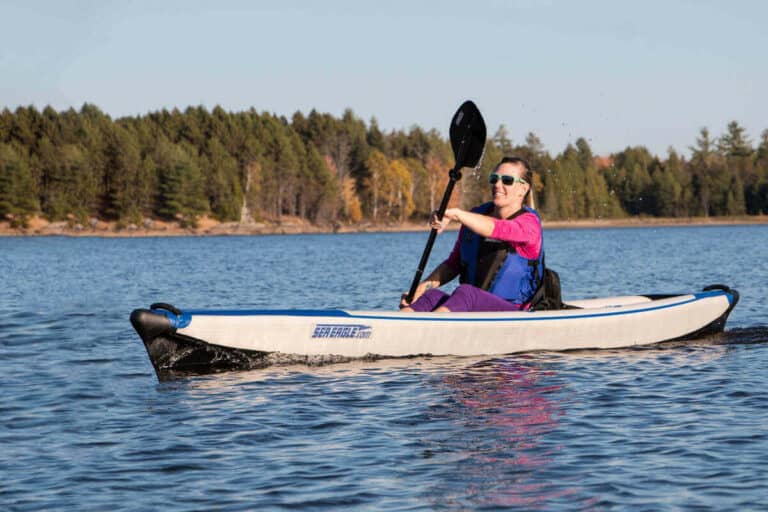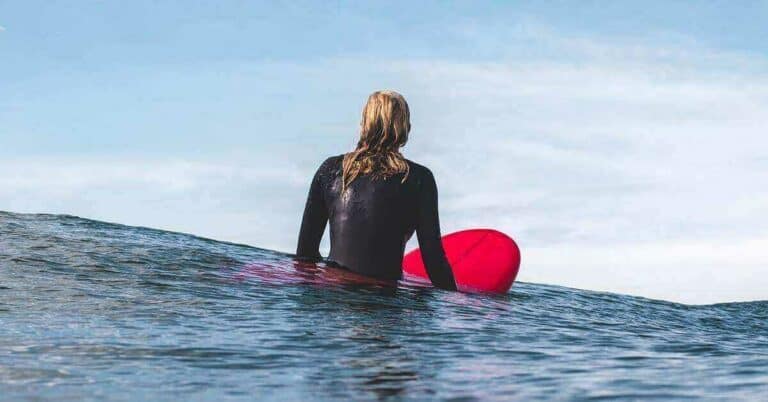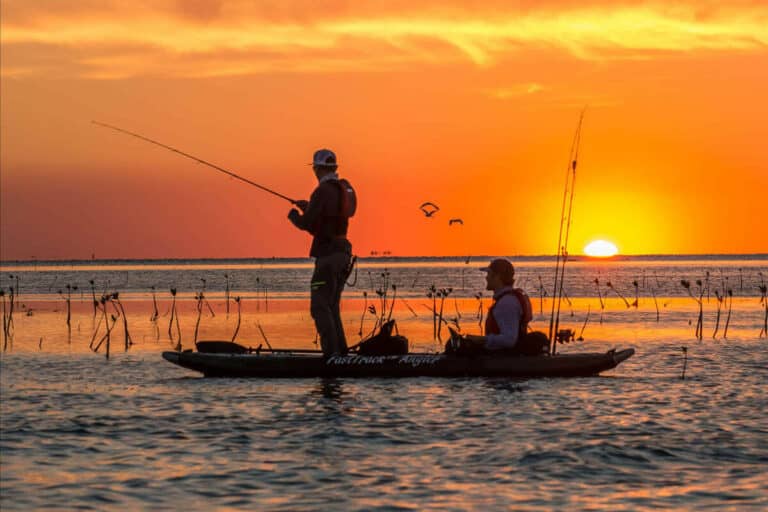Disclosure: I am compensated for purchases made through some links on this site. Click for details.
Cold-water kayaking introduces the risk of hypothermia. Wetsuits, drysuits, dry tops, paddling jackets, semi-dry tops, dry pants, base layers, headwear, gloves, and footwear are used to protect a kayaker from cold water temperatures and maintain a healthy body temperature.
Cold weather and cold water kayaking offer beautiful landscapes not found in warmer temperatures. The cool waters of Spring when trees and flowers are beginning to show their vibrant colors, the changing of the leaves in Fall, and the unique beauty of Winter with fresh snowfalls and the sounds of ice in the waves along the shoreline like my trip to Percy Priest Lake in Long Hunter State Park in Hermitage outside Nashville, TN.
Proper clothing for kayaking can expand your enjoyment of paddling into other seasons. Look for durable clothing that insulates you from the cold water while affording you comfort and freedom of movement while paddling.
Clothing Guidelines for Kayaking in Cold Water
There are a few guidelines to follow when choosing cold-water paddling clothes.
- Wear a personal floatation device (PFD) while on the water. Cold-water immersion can cause shock, swimming failure, hypothermia, and post-rescue collapse. Cold-water kayaking poses a much greater risk of drowning.
- Dress for the water temperature. Water temperatures of large bodies of water may be far colder than the air temperature. Water runoff from snow-capped mountains or water on rivers below a dam can also be quite cold year-round.
- Never wear cotton. Cotton losses all insulation factors when it becomes wet from water or sweat. Quick-drying fabrics with moisture-wicking and insulating properties are best. Nylon or polyester are great choices and lesser so wool. Wool is a great insulator but doesn’t dry as fast as synthetic fabrics.
- Dress in layers. Layers improve insulation factors. Layers also give you the leeway of adding layers for warmth or shedding layers if you get too hot.
- Wear clothes that allow ease of movement while paddling and comfort when seated.
- Wear abrasion-resistant fabrics. These rugged materials resist damage from rocks, sand, and debris as well as repetitive rubbing against rough areas of your kayak.
- Wear clothing with corrosion-resistant zippers and fasteners. Clothing failure due to corrosion from saltwater or other environmental factors is not an option.
- Dress in UPF-rated fabrics to protect yourself from the sun.
- Remember to protect your hands, feet, and head when kayaking in cold weather and waters. When wearing gloves, choose a warm, durable, and water-resistant pair that is specifically designed for paddling.
Dangers of Immersion in Cold Water
There are four stages of cold water immersion leading to incapacitation and death: 1
- Stage 1 – Initial immersion responses or cold shock: Death due to drowning, heart, or respiratory problems occur within 3-5 minutes after cold-water immersion.
- Stage 2 – Short-term immersion or swimming failure: Death due to impaired physical performance leading to the inability to help one’s self, swimming failure, and drowning occurs within 30 minutes after immersion in cold water.
- Stage 3 – Long-term immersion or hypothermia: Death due to reduced body temperatures leading to hypothermia and drowning occurs after 30 minutes of immersion in cold water.
- Stage 4 – Post-rescue collapse: Death due to the collapse of arterial blood pressure leading to cardiac arrest occurs during rescue or up to several hours after rescue from cold-water immersion.
For more about the dangers of immersion in cold water, see the report prepared for Transport Canada, a division of the Canadian government, entitled Survival in Cold Water by Dr. C.J. Brooks (Survival in Cold Water – pdf).
When Should You Wear Cold-Water Paddling Clothes?
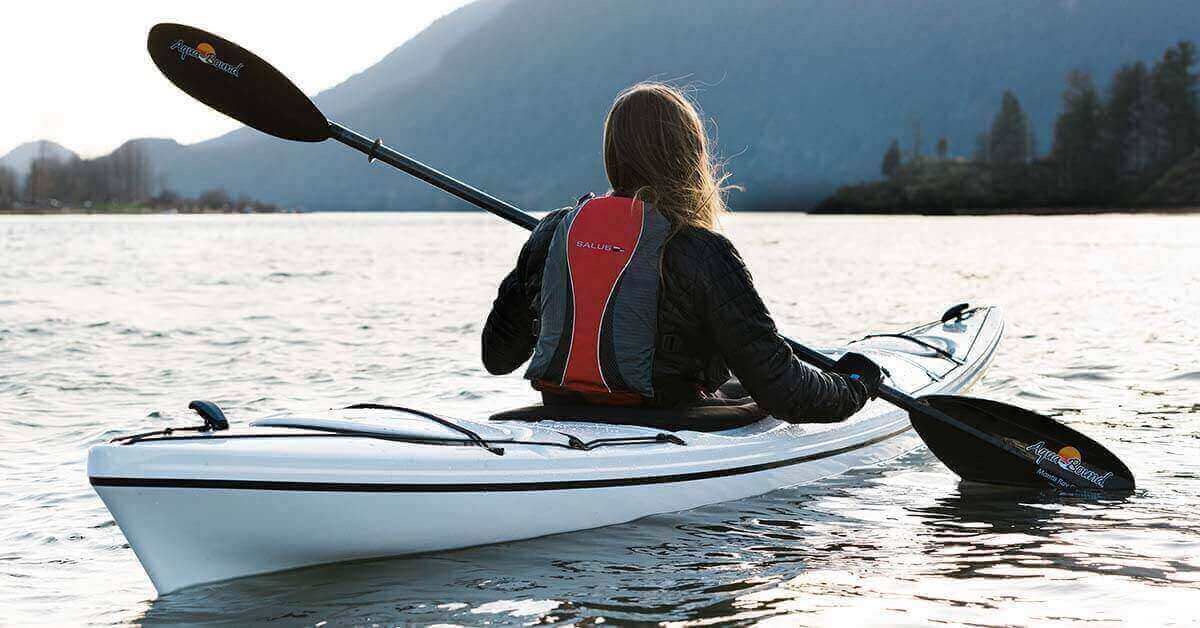
Cold-water paddling clothes should be worn any time the water is cold.
So what is considered “cold” water?
The subjectivity of the term “cold water” can be eliminated by referencing the U.S. Coast Guard Fishing Vessel Safety Program article “Cold Water Survival & Hypothermia – You May Not Know As Much As You Think” which states shock from cold-water immersion can occur in water as warm as 77oF. 2
Though many state and national park services post the water temperature online, a water thermometer is often the most accurate way to determine water temperature, especially if you are paddling backcountry lakes and rivers.
If you will be paddling in coastal waters, the National Oceanic and Atmospheric Administration (NOAA) has a water temperature map.
Cold Weather Kayaking Clothes
Cold-water paddling clothes keep you the warmest when the 3-Layer Principle is used with a base layer, middle layer, and outer layer… If you aren’t familiar with layering, check out my related article, “Layering Basics: What Is The 3-Layer Principle?”
Even if you don’t wear all three layers at the beginning of your kayaking trip, I’d recommend taking all layers with you in a dry bag. This way you can remove layers if you get too hot and add layers if you are too cold. You should also take an extra set of thermal layers in case your original layer happens to get wet.
Let’s take a look at the clothing options that help protect kayakers during cold-water immersion.
Wetsuits
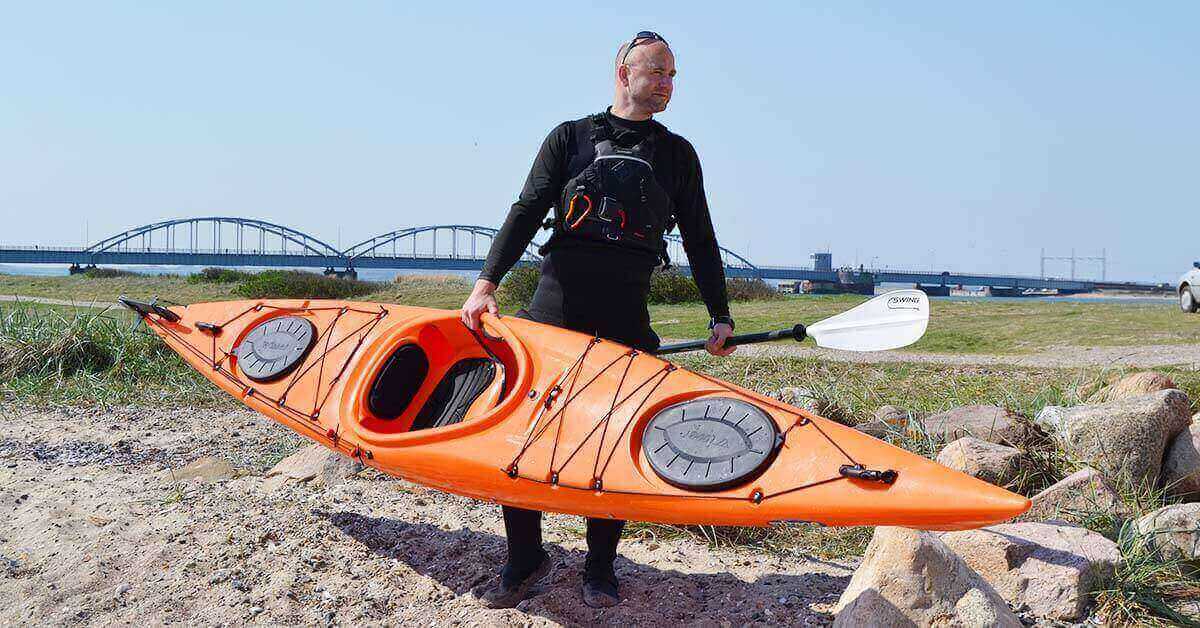
Wetsuits are often one-piece suits made from neoprene foam. These tight-fitting suits are designed to allow a thin water layer between you and the neoprene suit. As your body heats up the water layer, the bubbles in the neoprene foam and water layer create a thermal barrier that prevents heat loss.
Wetsuits come in a variety of types:
- Full-Body Wetsuit – Covers the arms, legs, and torso leaving the hands, feet, and head exposed. This style of wetsuit can is often best for cold water where minimal exposure is desired.
- Hooded Full-Body Wetsuit – This wetsuit takes it one step further by providing head covering.
- Shorty Wetsuit / Springsuit – The shorty wetsuit covers the upper arms, thighs, and torso.
- Long John/Jane Wetsuit – Also known as a Farmer John/Jane wetsuit, this wetsuit only covers the legs and torso.
- Short John/Jane Wetsuit – This wetsuit only covers the thighs and torso.
- Wetsuit Tops – Though wetsuits are often one piece, you can purchase short or long-sleeve tops. They are primarily used in cool water and paired with boardshorts, swim trunks, or bikini bottoms.
- Wetsuit Vest – Can be worn as a top or layered under a full-body wetsuit for extra warmth when cold-water kayaking.
- Wetsuit Bottoms – Short or full-length neoprene wetsuit pants are primarily worn in less frigid water temperatures.
Wetsuit Thickness
Wetsuits come in different thicknesses. Colder water requires a wetsuit made of thicker neoprene.
Manufacturer labels will have two or three numbers separated by a slash. These numbers tell the thickness of the neoprene in millimeters. The first number is the torso followed by the legs and then arms. If there are only two numbers the last number is the thickness of both the legs and arms. The torso is often thicker to insulate the body’s core against heat loss.
Neoprene gloves, boots, and hoods can also be worn for greater protection of your extremities against the cold.
Wetsuit, Thickness, and Temperature Guide
Your desired wetsuit type and neoprene thickness will start with the water temperature. Consider a wetsuit made of thicker neoprene when there are cold air temperatures, windy conditions, low activity levels, or if you are cold-natured.
The following wetsuit types and water temperature to neoprene thickness are general recommendations that can be used as a guide when choosing a wetsuit:
| Water Temp Range (°F) | Water Temp Range (°C) | Wetsuit Thickness In Millimeters | Wetsuit Types | Seal Types |
|---|---|---|---|---|
| 65°- 75° | 18° – 24° | 0.5 mm – 2/1 mm | Top, Vest, Bottom, Shorty, or Short John/Jane | N/A |
| 62°- 68° | 16° – 20° | 2 mm – 3/2 mm | Shorty, Short John/Jane, Long John/Jane, or Full-Body | Flatlock* |
| 58°- 62° | 14° – 17° | 3/2 mm – 4/3 mm | Hooded Full-Body or Full-Body + Boots + Gloves | Sealed |
| 52°- 58° | 11° – 14° | 4/3 mm – 5/4/3 mm | Hooded Full-Body or Full-Body + Boots + Gloves | Sealed and Taped |
| 43°- 52° | 6° – 11° | 5/4/3 mm – 6/5/4 mm | Hooded Full-Body or Full-Body and Hood + Boots + Gloves | Sealed and Taped |
| 42° and below | 6° and below | 6/5/4 mm + | Hooded Full-Body or Full-Body and Hood + Boots + Gloves | Sealed and Taped |
* Flatlock stitching is when the panels of a neoprene wetsuit are laid over the adjoining layer and then stitched together. The result is a strong, flexible seam.
Wetsuits for Kayaking
Wetsuits are relatively inexpensive and available in various thicknesses. The thicker suits limit flexibility and range of movement. Wetsuits 3mm and under are often preferable and the more popular wetsuit types for paddlers are the sleeveless short or long John/Jane wetsuit also known as a Farmer John/Jane wetsuit.
The Farmer John style though more comfortable does not provide protection for the arms against cold waters or weather and is quite often best used as a base layer over which a paddling jacket or semi-dry top can be worn.
Related Content:
Drysuits
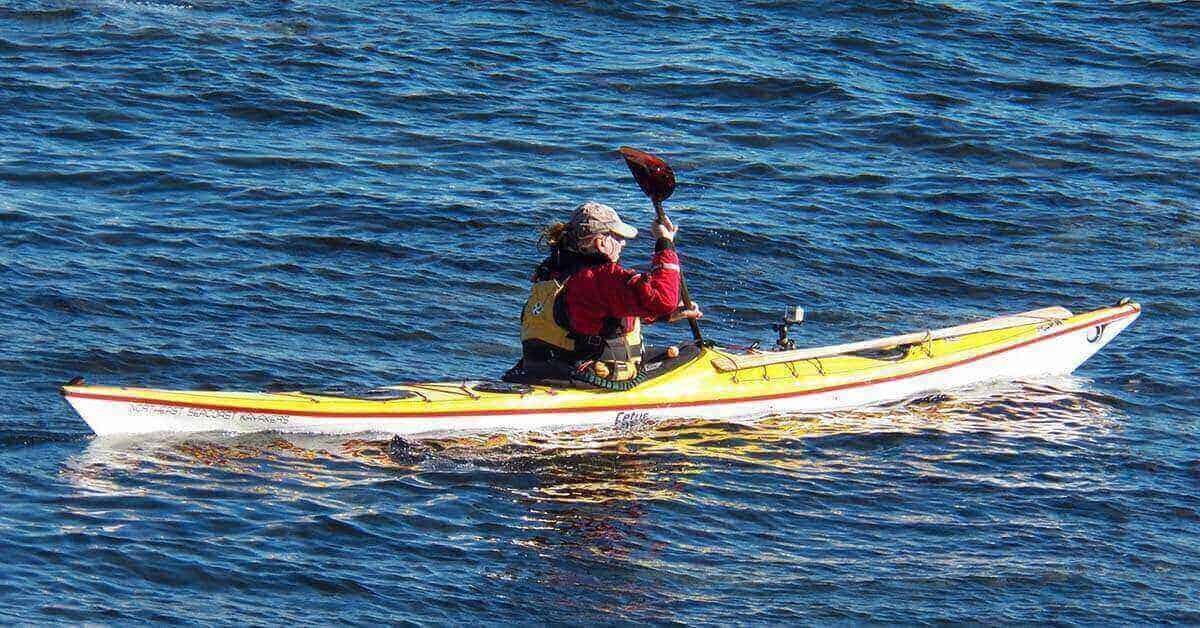
Drysuits are the ultimate thermal protector for kayakers when paddling in cold environments. These full-body suits are loose-fitting shells designed to accommodate base layers and made of waterproof material with rubber gaskets at the neck, wrists, and ankles (if sockless) for a water-tight fit.
Drysuits are either footless with a rubber gasket around the ankles to keep out water or they have “socks” like footie pajamas that keep your feet completely dry. With either style drysuit, boots are needed to keep your feet warm and for protecting the sock from damage that might cause leaks.
On its own, a drysuit may not keep you very warm. It’s the thermal base layers and liners that provide the real warmth. Just adjust your base layers to accommodate different water temperatures. 3,4
Note: Drysuits are designed for different water sports. Make sure to buy one specifically designed for kayaking and not diving.
Kayak Dry Tops
Kayak dry tops are jackets made from a waterproof material with rubber gaskets at the neck and wrists and most often an overskirt that attaches to the cockpit of a sit-in kayak. A dry top is a great option for anyone who won’t be making a wet exit from their kayak.
A kayak dry top is essentially the top half of a kayak drysuit. This makes it less expensive than a drysuit and a bit more comfortable in cool temperatures, but it comes with a potential compromise in protection.
Cold-water thermal protection can be lost when a wet exit is made. Upon a wet exit, cold water can enter the waist of the dry top and compromise clothes worn on your bottom half and under the dry top.
An excellent Eskimo roll is a great skill to master when wearing a kayak dry top.
Paddling Jackets
A paddling jacket has wrist and neck closures to keep out most water but doesn’t typically seal around the waist or have an overskirt for sit-in kayaks. These waterproof jackets are used when water temperatures aren’t overly cold to protect from spray, water runoff from your paddle, waves, and rain.
You are likely to get wet when making an Eskimo roll and are guaranteed to get wet during a wet exit, therefor paddling jackets should not solely be relied on for protection from cold water immersion.
Semi-Drytops
Semi-dry tops protect a kayaker’s torso and arms from spray, waves, and rain. Its advantage over a paddling jacket is the greater breathability of its fabric and the use of neoprene neck and wrist closures provides improved water resistance. The waist will still leave you vulnerable if immersed.
Paddling Pants and Paddling Bibs
Paddling pants and paddling bibs are water-resistant, breathable splash pants with adjustable waistbands and ankle cuffs. They are designed to keep warmth in and water out. These kayaking pants are ideal in cool temperatures for protection from spray, water runoff from your paddle, waves, and rain.
Semi-Dry Paddling Pants
Semi-dry paddling pants are much like regular paddling pants with one extra layer of protection to keep water out in case of immersion. These kayaking pants have ankle gaskets in addition to the adjustable overcuffs. Semi-dry paddling pants are better than paddling pants at keeping base layers dry.
Base Layers
Base layer clothes for cold-water paddling are synthetic and thermal clothing that wicks sweat off your skin and helps regulate your body temperature. They are not meant to get wet and should be worn under a dry suit or other waterproof clothing designed for cold-weather kayaking.
Headwear
Headwear for cold weather paddling can help keep you warm and protect your head, face, ears, and neck from the elements.
If you will be wearing a kayak helmet, be sure to choose an option that properly fits under your helmet.
Popular headwear options for cold water kayaking are:
- Wool or fleece beanie
- Face mask
- Buff
- Balaclava
- Neoprene cap or hood
Gloves and Pogies
Waterproof neoprene gloves or mittens with a good grip material will keep your hands warm and dry while still allowing a secure paddle grip.
Pogies can be attached to your paddle to keep your hands warm. They can be used alone allowing direct hand contact with the paddle’s shaft or they can be used with neoprene gloves for added warmth.
Footwear
Neoprene boots are ideal for cold water conditions. These lightweight boots will keep your feet warm and dry and a pair with thick rubber soles and rubber toe and heel caps will provide traction while protecting your feet from rocks and debris.
If you need extra warmth, waterproof socks or thermal socks will provide extra warmth.
These kayak boots come in different styles. Avoid below the ankle. Taller neoprene boots are better at protecting your feet and ankles from the cold.
Spray Skirt
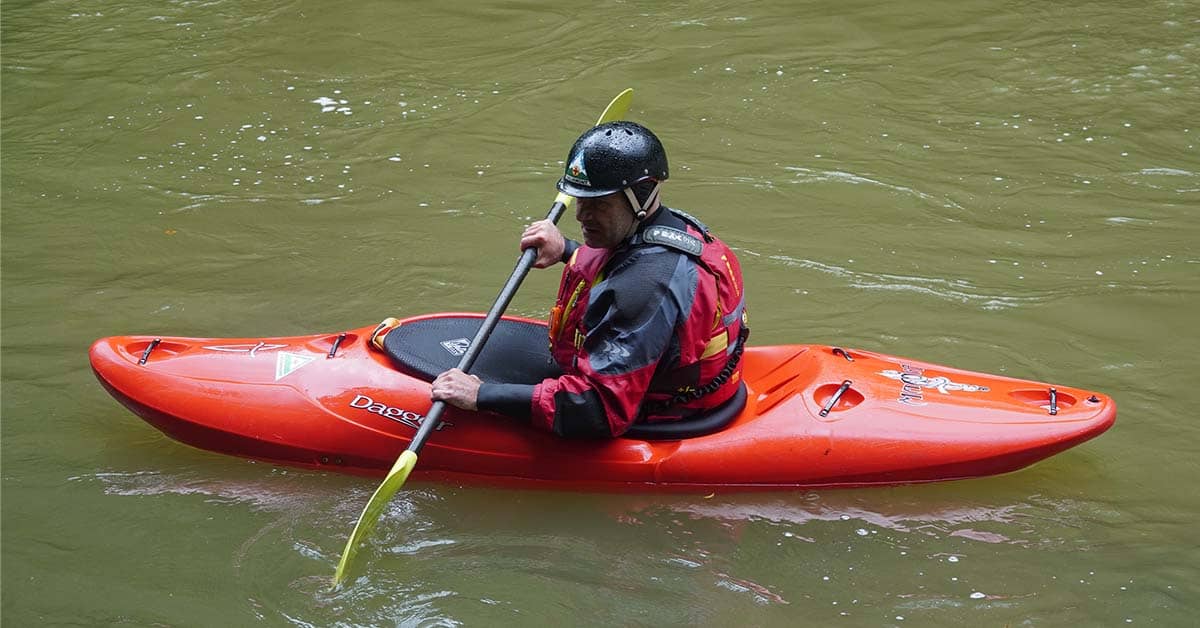
If you will be kayaking in a sit-in kayak, a neoprene skirt will help keep your lower half warm and dry.
These spray skirts have rubber or neoprene rands around the outer edge of the skirt for secure attachment to the cockpit while the neoprene tunnel snugly fits around your torso to keep spray, waves, or water from entering during a roll.
Personal Flotation Device (PFD)
A PFD should always be worn when paddling in cold water.
An appropriate PFD can mean the difference between life and death when the shock from cold-water immersion prevents a paddler from performing self-rescue.
Tips for Kayaking in Cold Water
- Check the weather and water conditions before heading out.
- Dress for the water temperature and not the air temperature.
- Bring a change of clothes for when you get off the water.
- Put extra layers in a dry bag and take them on your paddle. The extra layers will be handy if you get cold or if your initial layers get wet.
- Always kayak with a partner for safety.
- Know the Boating Safety Basics For Paddle Boaters.
- Carry the appropriate equipment from the Canoe & Kayak Safety Equipment Checklist.
- Learn kayak rescue techniques including self-rescue. REI has a great article on How To Do A Kayak Self-Rescue if you need more information.
- Learn how to treat frostbite and hypothermia.
Conclusion
When cold water kayaking, staying warm and dry is of utmost importance for both your safety and for having an enjoyable day on the water. By layering in the kayak clothing mentioned above you can keep your torso and extremities at a comfortable temperature even if immersion occurs.
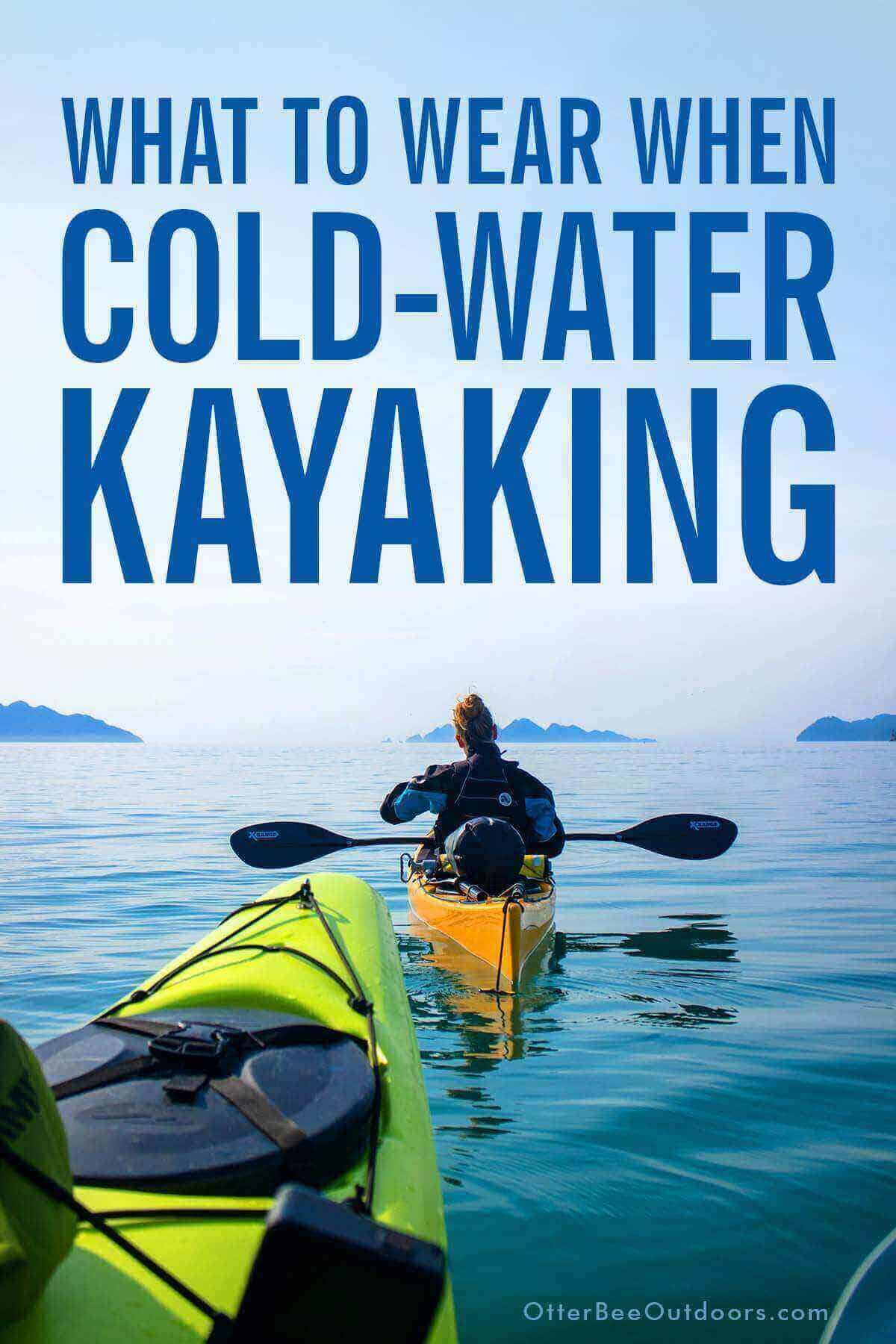
References
- C J Brooks. Survival in Cold Water (Survival in Cold Water – pdf). Transport Canada. 24 August 2001.
- J S Hayward. Cold Water Survival & Hypothermia – You May Not Know As Much As You Think. U.S. Coast Guard Fishing Vessel Safety Program. 2006 Feb.
- J S Hayward. Thermal Protection Performance of Survival Suits in Ice-Water. Aerospace Medicine and Human Performance. 1984 Mar;55(3):212-5.
- A M Steinman, J S Hayward, M J Nemiroff, P S Kubilis. Immersion Hypothermia: Comparative Protection of Anti-Exposure Garments in Calm Versus Rough Seas. Aerospace Medicine and Human Performance. 1987 Jun;58(6):550-8.

